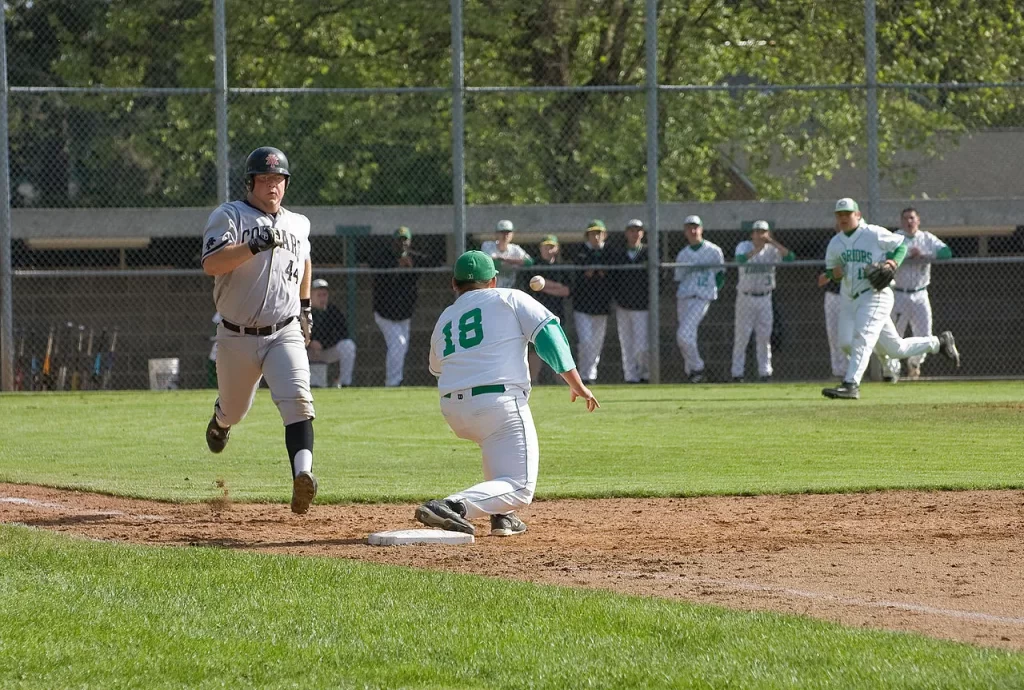
Baseball, deeply entrenched in American sports culture, unfolds its narrative inning by inning. This guide navigates the pivotal role of innings and introduces the fundamental terms “top” and “bottom.”
Innings are the building blocks of a baseball game, each telling a unique story of strategy, skill, and suspense. Understanding the dynamics of innings is essential to unraveling the beauty of the sport.
The terms “top” and “bottom” aren’t mere directional markers; they encapsulate the essence of competition. The game’s ebb and flow hinge on these designations, setting the stage for the dance between the visiting and home teams.
Also Read: Understanding Baseball Errors
Top of the Inning
The “Top of the Inning” marks the initiation of the baseball narrative. It refers to the first half, where the visiting team steps up to the plate, ready to showcase their offensive prowess. This phase sets the tone for the unfolding drama on the field.
During the Top of the Inning, the visiting team aims to score runs by strategically batting against the opposing team’s defense. Their objective is to seize an early advantage, placing pressure on the home team from the outset.
In the symphony of baseball statistics, the visiting team’s achievements take the spotlight in the top section of the scoreboard. The inning’s progress, runs scored, and potential lead are all encapsulated in this visual representation, offering spectators a real-time snapshot of the game’s trajectory.
In the subsequent section, we unravel the counterpart of the Top of the Inning— the “Bottom of the Inning,” exploring the dynamics when the home team takes center stage.
Bottom of the Inning
The flip side of the baseball narrative brings us to the “Bottom of the Inning.” In this second half, the home team steps up to bat, ready to respond to the challenges posed by the visiting team. It’s a critical juncture where defensive strategies and offensive tactics intertwine.
During the Bottom of the Inning, the home team takes on the dual responsibility of defending against the visiting team’s offensive maneuvers and launching their own counterattack. This defensive and offensive balance adds layers to the strategic dance of baseball.
As the Bottom of the Inning unfolds, the home team’s quest for runs and the progression of the inning find their place on the lower half of the scoreboard. Here, the home team’s efforts are meticulously documented, offering a comprehensive view of the game’s evolving dynamics.
Next, we explore the mechanics of innings, shedding light on how each inning concludes and the structure of a standard nine-inning baseball game.
Also Read: Top 10 MLB Stadiums Guide
Inning Dynamics
The heartbeat of a baseball game lies in the rhythm of its innings, each orchestrated to a distinct cadence. The conclusion of an inning occurs when the defensive team records three outs. This can transpire through strikeouts, catches, or force-outs, and it marks the transition from the fielding team to the batting team.
A standard baseball game comprises nine innings, a structured journey through the delicate balance of offense and defense. The strategic interplay unfolds as the visiting team starts each inning in the top half, and the home team responds in the bottom half. This cyclical progression ensures a comprehensive exploration of both teams’ skills and tactics.
As we move forward, we address common misconceptions about advantages in batting order and delve into statistics that illuminate the true dynamics of top and bottom innings.
Advantages and Misconceptions
There is a common misconception that batting in the bottom of the inning provides a significant advantage. While having the last at-bat in the bottom of the ninth inning can be crucial, statistical analyses often challenge the notion that batting order consistently dictates the outcome. The game’s dynamics are intricate, with success depending on a multitude of factors beyond the batting sequence.
Digging into the numbers reveals a nuanced perspective. Statistical analyses indicate that the advantage associated with batting in the top or bottom of the inning is not a clear-cut narrative. Teams have demonstrated success and strategic prowess from both positions, debunking the myth of a predetermined advantage. Understanding these statistics adds depth to our appreciation of the tactical intricacies within each inning.
In the next section, we explore the unique dynamics of extra innings and how the game adapts when the standard nine innings prove insufficient to determine a winner.
Extra Innings
When a baseball game extends beyond the standard nine innings without a decisive winner, we enter the realm of extra innings. Unlike the standard innings, where each team gets a turn to bat and field, extra innings follow a different rhythm. The teams continue to battle, searching for that decisive moment that will tip the scales in their favor.
Extra innings unfold with a sense of urgency and strategic intensity. What sets them apart is the alternating pattern: each half-inning sees one team at bat and the other in the field. This cycle persists until a victor emerges. The relentless back-and-forth of extra innings underscores the resilience and adaptability of baseball teams as they vie for the coveted win.
As we progress, we touch upon the broader usage of the terms “top” and “bottom” in sports, extending beyond baseball to find resonance in other games like softball.
Wider Usage
The terminology of “top” and “bottom” isn’t confined to the diamond of a baseball field; it extends its reach to other sports, notably finding a home on the softball field. In softball, as in baseball, the terms delineate the two halves of an inning, creating a universal language for players and fans alike.
Softball enthusiasts adopt a similar structure, where the visiting team takes the field in the top half, and the home team responds in the bottom half of each inning. This consistency in terminology across related sports not only streamlines communication but also fosters a shared understanding of game dynamics.
As we conclude, we recap the significance of top and bottom in baseball innings, bringing our exploration full circle.
Also Read: Who Bats First in Baseball Guide
In Crux
In the intricate tapestry of baseball, the terms “top” and “bottom” weave a narrative of strategy, competition, and resilience. Innings, divided into these distinctive halves, shape the ebb and flow of the game.
From the initiation of the Top of the Inning, where the visiting team sets the stage, to the Bottom of the Inning, where the home team responds in kind—the balance is delicate, and the stakes are high. Each inning concludes, not just with outs but with the anticipation of a fresh start.
Addressing misconceptions about advantages, we unveil the statistical complexity, highlighting that success is not predetermined by the order in which a team bats. The rhythm of extra innings adds a layer of drama, showcasing the adaptability of teams in the quest for victory.
Beyond baseball, the language of “top” and “bottom” finds a home in the broader sports arena, resonating in the realm of softball and creating a shared lexicon for enthusiasts.
In unraveling the essence of top and bottom in baseball innings, we discover more than directional markers on a scoreboard; we find the heartbeat of a sport that captivates with every pitch, swing, and catch. As we celebrate the universal language of innings, we embrace the timeless beauty of America’s favorite pastime.

Meet Daniel Anderson, the heart and soul behind Baseball Pro Picks. At 49, Daniel’s life has revolved around baseball, a passion that’s as strong today as it was when he first fell in love with the game. Living in the USA, Daniel has dedicated countless hours to watching, analyzing, and understanding every pitch, hit, and home run, making almost no game missed. His deep-rooted love for the sport is matched only by his commitment to sharing insightful, expert analysis with fellow baseball enthusiasts. With decades of experience and a keen eye for the game’s nuances, Daniel brings a unique perspective that enriches Baseball Pro Picks. Trust Daniel to guide you through the intricacies of baseball with the authority and trustworthiness of a true aficionado.












